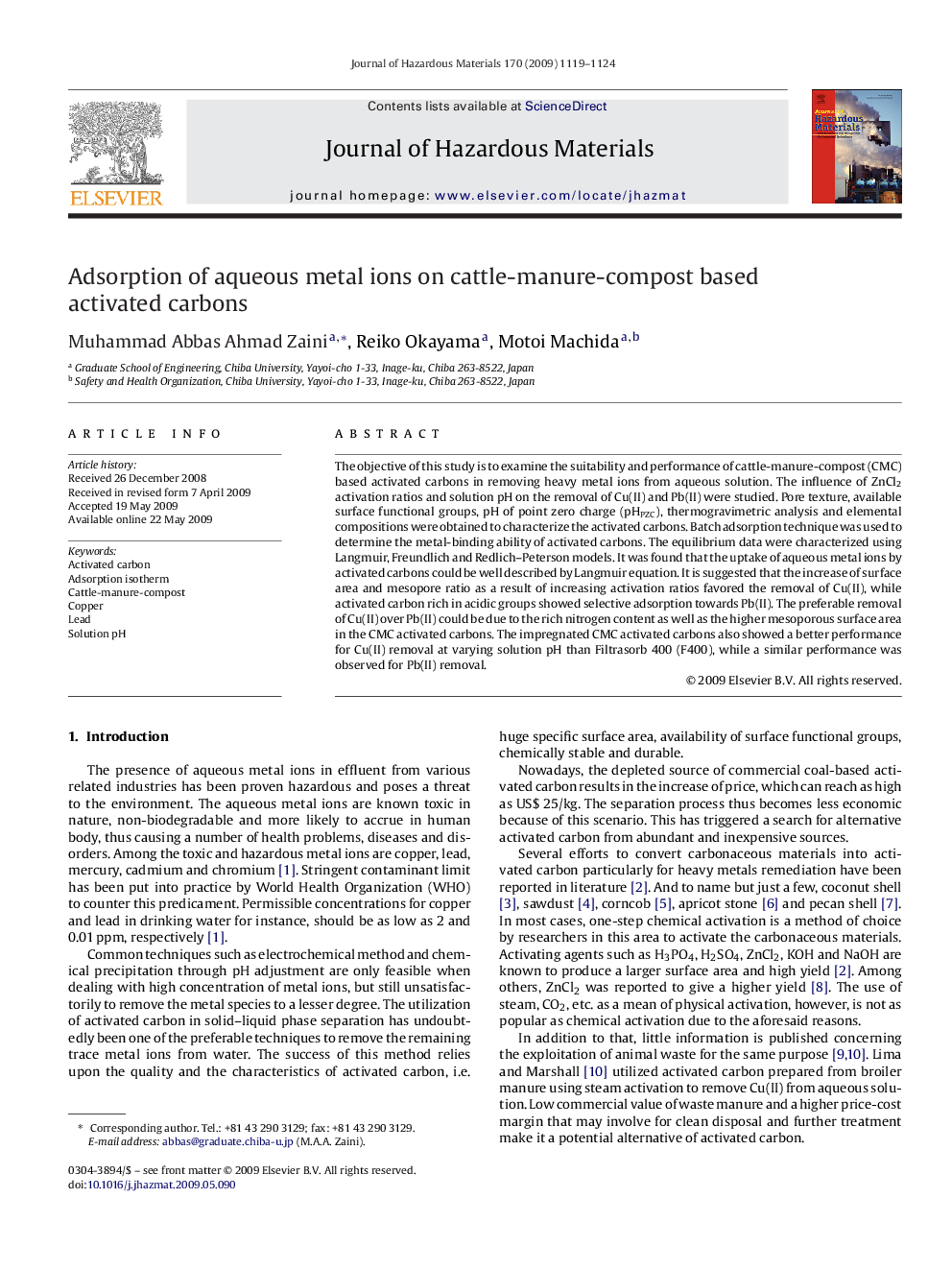| Article ID | Journal | Published Year | Pages | File Type |
|---|---|---|---|---|
| 581279 | Journal of Hazardous Materials | 2009 | 6 Pages |
Abstract
The objective of this study is to examine the suitability and performance of cattle-manure-compost (CMC) based activated carbons in removing heavy metal ions from aqueous solution. The influence of ZnCl2 activation ratios and solution pH on the removal of Cu(II) and Pb(II) were studied. Pore texture, available surface functional groups, pH of point zero charge (pHPZC), thermogravimetric analysis and elemental compositions were obtained to characterize the activated carbons. Batch adsorption technique was used to determine the metal-binding ability of activated carbons. The equilibrium data were characterized using Langmuir, Freundlich and Redlich-Peterson models. It was found that the uptake of aqueous metal ions by activated carbons could be well described by Langmuir equation. It is suggested that the increase of surface area and mesopore ratio as a result of increasing activation ratios favored the removal of Cu(II), while activated carbon rich in acidic groups showed selective adsorption towards Pb(II). The preferable removal of Cu(II) over Pb(II) could be due to the rich nitrogen content as well as the higher mesoporous surface area in the CMC activated carbons. The impregnated CMC activated carbons also showed a better performance for Cu(II) removal at varying solution pH than Filtrasorb 400 (F400), while a similar performance was observed for Pb(II) removal.
Related Topics
Physical Sciences and Engineering
Chemical Engineering
Chemical Health and Safety
Authors
Muhammad Abbas Ahmad Zaini, Reiko Okayama, Motoi Machida,
